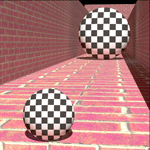![]()
|
|
VISION & NEUROIMAGING RESEARCH LABORATORY |
 |
Scott Murray, Ph.D. Assistant Professor |
 |
|
|
|
| Department of Psychology | |
| RESEARCH | University of Washington |
| PUBLICATIONS | Box 351525 |
| COURSES | Seattle WA 98195-1525 |
| 206-543-4532 (office) | |
| 206-221-6846 (lab) | |
| somurray@u.washington.edu |
|
|
|
Recognizing objects is a behavior that we do continuously and without apparent effort. But this subjective ease hides a difficult computational problem. The visual system must use ambiguous two-dimensional (2D) retinal information to infer unambiguous 3D representations and then match these neural representations to previously seen objects. Further, these processes occur nearly instantaneously and practically without error – a feat no computer vision algorithm has come close to matching. How is our brain able to achieve this? My research uses a combination of behavioral and functional magnetic resonance imaging (fMRI) techniques to understand the neural mechanisms of object recognition and other high level visual processes. Some of the questions currently being addressed include: How does the visual system group features into objects and surfaces? How does the visual system recognize objects across changes in viewpoint? How is perceived depth and image size combined in the visual cortex? Does perceived object size affect retinotopic maps in early visual cortex? How does attention change neural tuning and sensitivities? In addressing these questions, we take a general theoretical approach that the abilities of the visual system result from using an inferential process that combines prior knowledge and expectations with incoming sensory data to form a "best guess" of the object and surface structure of the environment. |